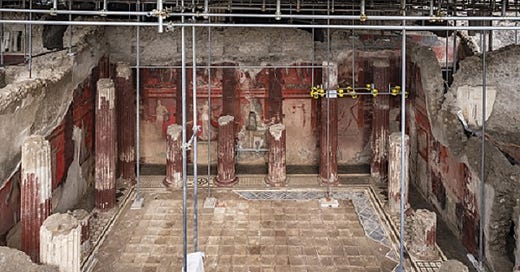March Madness: Mystery Cult of Dionysus Finds and the Return of the Goddess of Spring
Archaeological Finds of Ancient Mystery Cults
Life, death, and rebirth are not only perfect themes for Spring but did you know they were significant components in mystery cults of the ancient world? Yup — and you may be thinking, what is a mystery cult? Are they bad? And who had one? Well, mystery cults in the ancient world, also known as Greco-Roman mysteries, allowed for a more personal experience that many longed for outside of official cultic practices of the state!
They were not bad at all! Of course, authors of antiquity will have their opinions and questions surrounding these secretive rituals and rites, but even so, many prominent figures of ancient history belonged to them! Have you heard of Apuleius? Or say The Golden Ass? Well, he was in one! As were Herodotus, Plutarch, Pausanias and more! And for the question of which gods had them, well, we know of quite a few, including the mysteries of Dionysus, the Cult of Cybele, the Cult of the Magna Mater, the Cult of Isis, the Cult of Mithras, and the most well known, the Eleusinian Mysteries.
So, how does the cult of Dionysus fit in with March Madness? Not only is he the god of madness, but incredible archaeological finds from the site of Pompeii depict cultic rites and even a possible initiation—yes, you had to be initiated into these cults!

Archaeology & Mythology: Frescoes from Pompeii
Some of my favorite archaeology discoveries have ties to Greek Mythology. Why? Because so many of us can relate to these stories centuries later! With mystery cults, however, considering our knowledge on the subject matter is sparse due to their secret nature, it’s findings like this one that help us piece the past back together one image at a time!
In late February, the archaeological site of Pompeii announced the discovery of life-sized frescoes depicting a Dionysian procession and initiation rites. These are absolutely mind-blowing to see! The paint is so well preserved, due to the eruption of Mt. Vesuvius in 79 CE, that it’s sometimes hard to think that they are over 2000 years old!
Enter into the mysteries with these stunning frescoes dating back to the first century BCE (before common era), specifically to the 40’s—30’s BCE! This was discovered in what archaeologists call the House of Thiasus, which refers to the Dionysian processions in Regio IX. In Pompeii, you will find that many of the houses are based on what was found within, such as the House of the Golden Bracelet, House of the Faun, House of the Small Fountain, and so on.
The frescoes cover three walls of this banquet hall, all with beautiful red backgrounds. In many scenes, there are depictions of the female followers of Dionysus known as maenads. Now, in mythology and writings from antiquity, they have quite the reputation, with some stories claiming these women would work themselves up into an ecstatic frenzy and tear men apart. Other followers are also represented, such as satyrs who range in age, with younger ones playing music and even performing a sacrifice. Both are known to occur in mystery rites.
However, what I consider to be the most incredible scene yet is one at the center, which depicts Silenus, an elderly god associated with wine-making and known as the companion and follower of Dionysus, beside a young woman. Why is this my favorite? Well, because archaeologists believe it may represent a part of an initiation. The only other depictions on the subject come from the Villa of the Mysteries, discovered back in 1909! Mystery cults are also some of my favorite things to cover in the course I teach at Temple University!
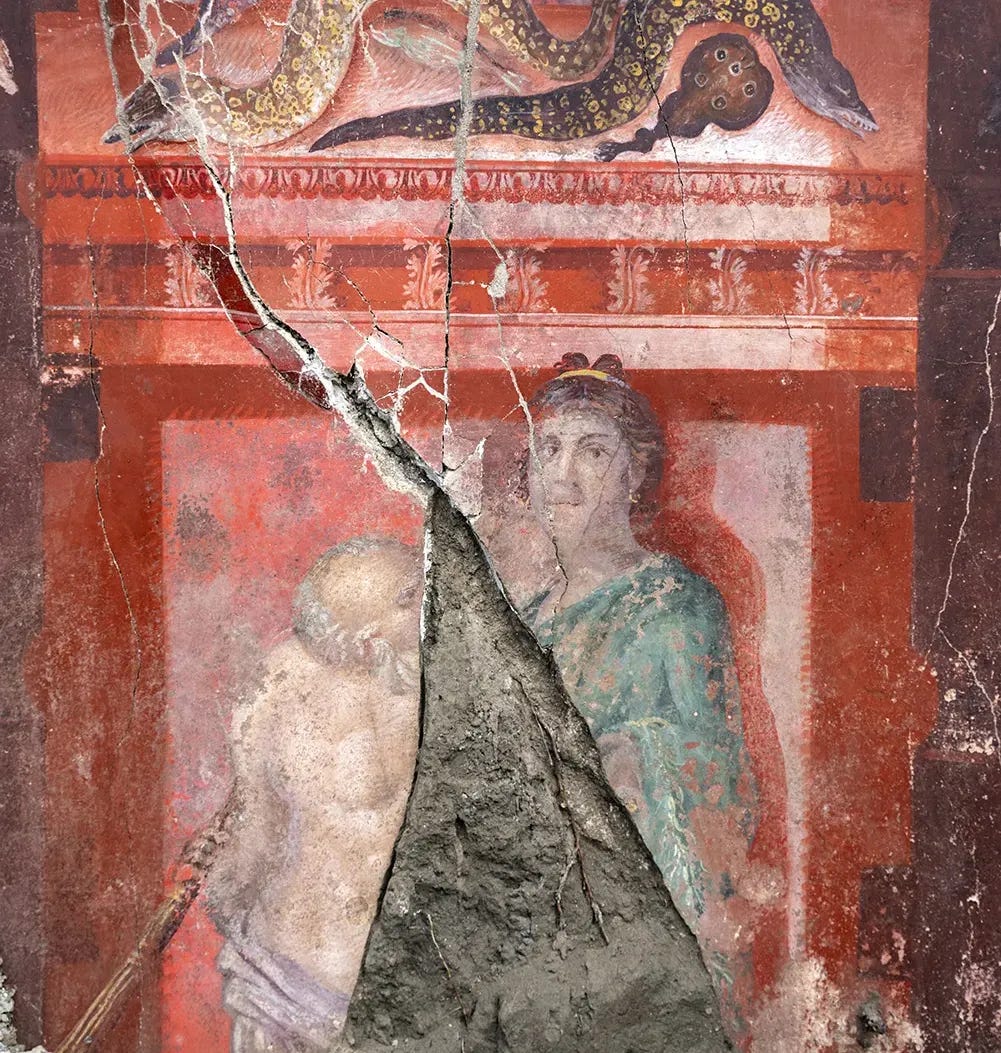
These frescoes will help archaeologists and scholars better understand the inner workings of these ancient cults, their initiations, and how their followers, temples, and more flourished during these ancient times!
But, as always, what do you think?
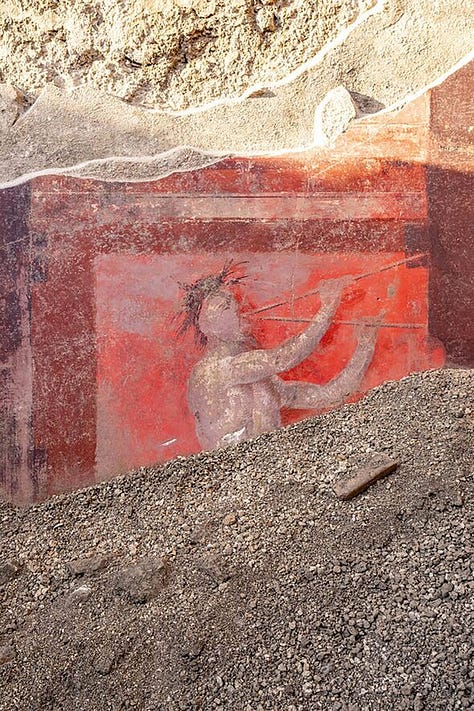
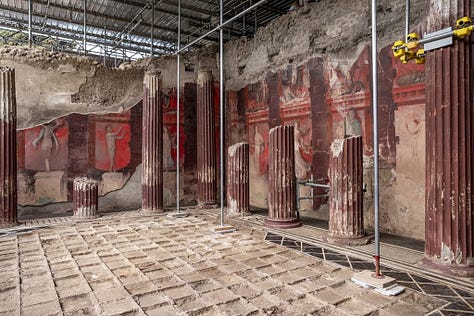
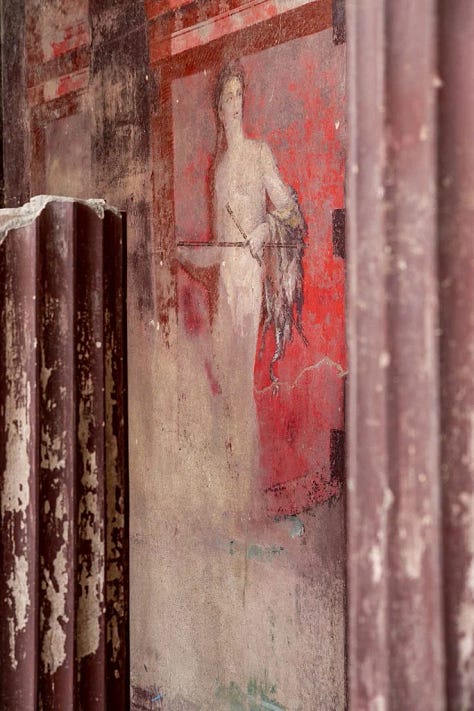
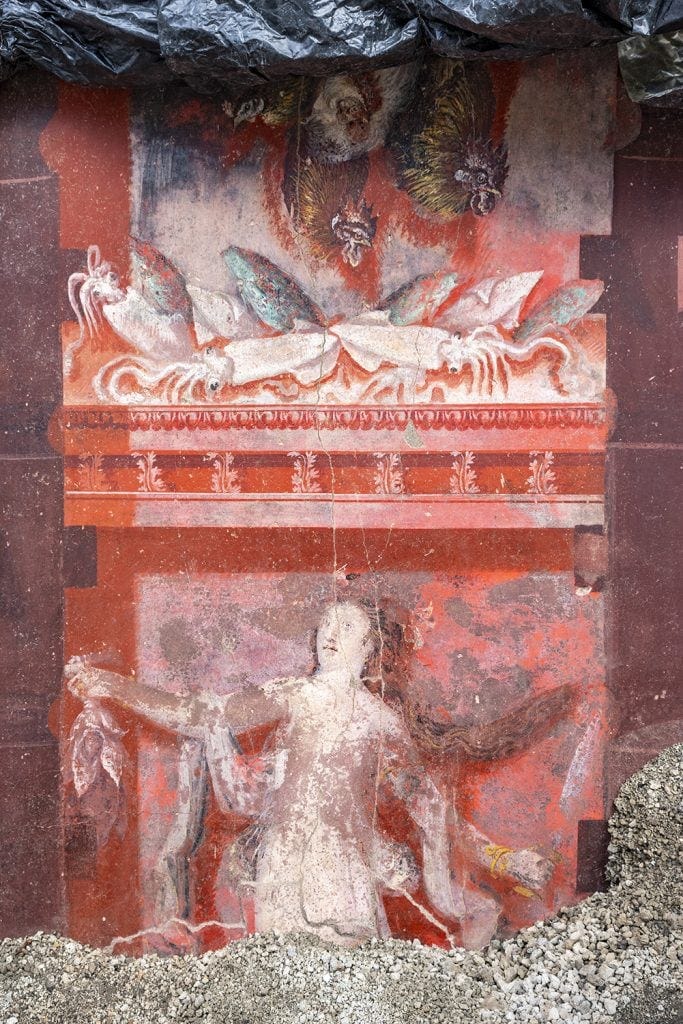

Looking for a podcast episode on the Dionysian Mysteries? Check out the Mystery cult of Dionysus on the Styx and Bones Podcast here!
Spring Returns, as does Persephone
Just as Dionysus had his own mystery cult, so did Persephone and her mother, Demeter! These were known as the Eleusinain mysteries. They took place twice a year at the site of Eleusis, located near Athens, and they were the most famous of the mystery cults and celebrations, with initiates coming from all over the Mediterranean world to experience the reunification of the two goddesses.
As the myth goes, the goddess of Spring, Kore, was abducted by Hades, the King of the Underworld. In her desperate search for her, her mother enlisted the help of the goddess Hekate; however, this caused Demeter to neglect her responsibilities, resulting in famine and the death of many mortals. Zeus, seeing this, decided to act and return his daughter to her mother. But before she left, she ate seeds of a pomegranate, food from the Underworld. Thus, an agreement was reached where she would spend part of the year in the mortal realm with her mother and the other part with her husband, ruling alongside him. And these mysteries celebrate just that— their reunification.
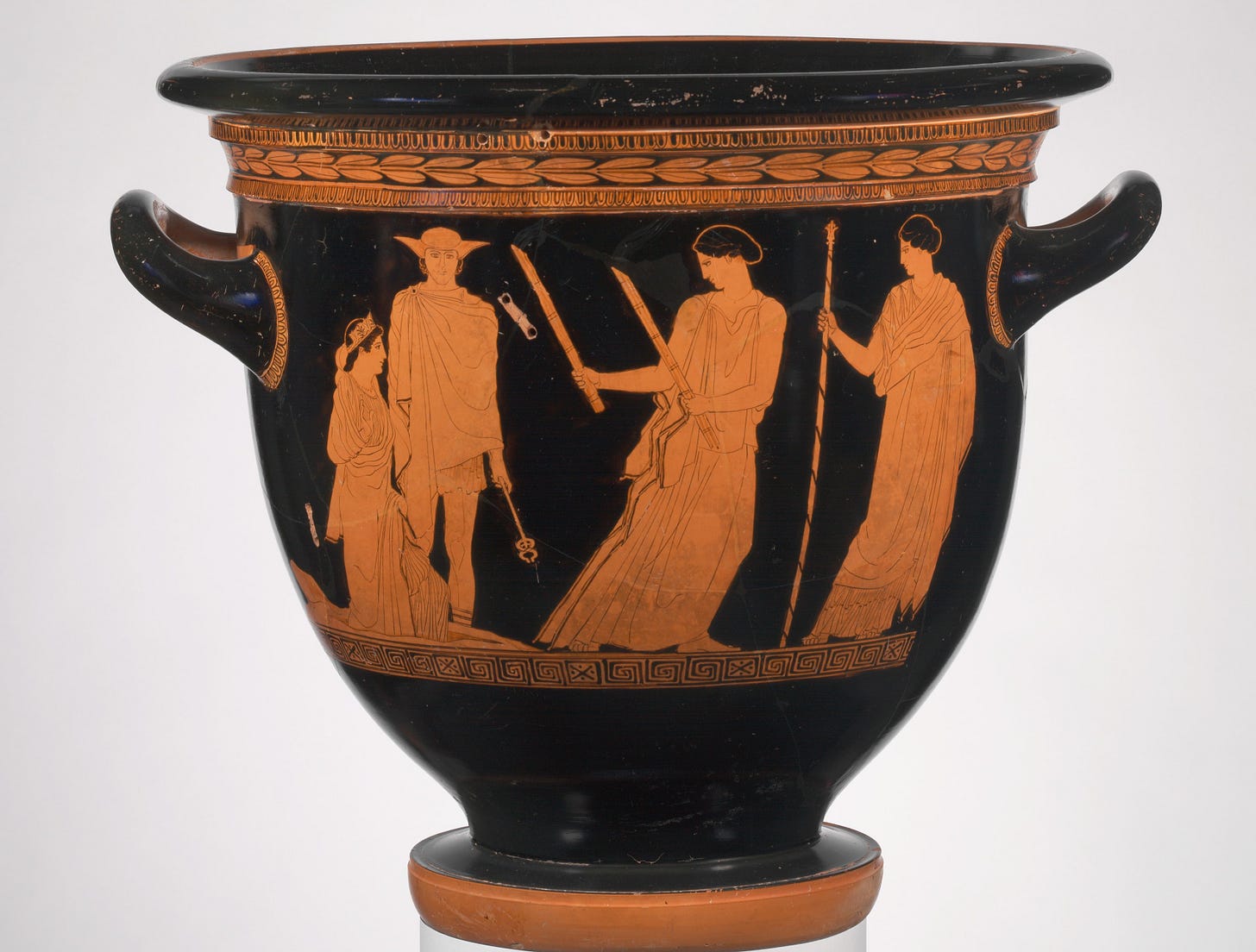
The Eleusinian mysteries thus celebrated the reunion of mother and daughter and were open to all who wished to join, provided you knew Greek and had no unatoned bloodguilt—meaning you hadn’t killed anyone in cold blood. These celebrations took place twice a year, in the spring and fall.
While this was a mystery cult, we know that things were said, things were shown, and things were done on the night of initiation—I know, pretty shocking! It is believed that the myth may have been reenacted, with the climax of the initiation being a great flash of blinding light! So what did these initiates (mystai) experience other than that? Well the promise of life after death and a personal connection with these goddesses.
While the Dirt Diaries has never done a podcast on the topic, I have done a whole episode on the Eleusinian Mysteries, Persephone, and more on Styx and Bones, the second podcast I also co-host. Listen to it here!

One of my favorite things about the Eleusinian mysteries, temples, and more is that they live again digitally! Yes! If you ever get a chance to play Assassin’s Creed Odyssey, I highly recommend that you do! The telesterion, colors, and more are as vibrant and active as they were over two millennia ago. It is a great way to visualize the past, especially because the ancient world was full of color! While the story is historical fiction, walking through the halls that initiates did thousands of years ago allows the site's history and mysteries to live on today.
Want More?
For the Greek myth girlies, you can check out the Styx and Bones podcast wherever you listen to podcasts and watch on YouTube!
And if you love Greek mythology as much as I do, you can check out the many products from Styx and Bones Temple that I co-own, which are inspired by the goddesses of myth and more!
The new substack is every other Wednesday and will be dropping at noon EST. Catch up on all Dirt Diaries podcasts now!
As always, stay curious and keep your books open!
-Tenninger


